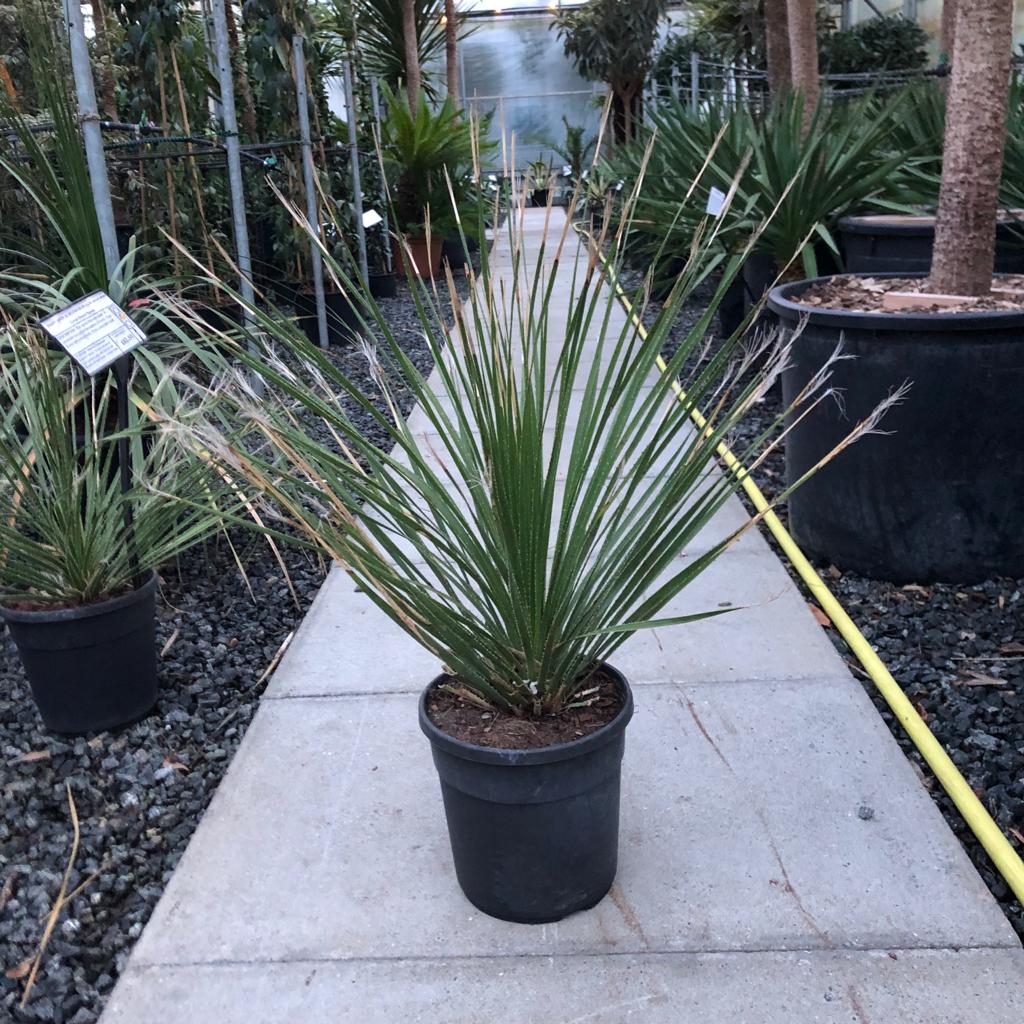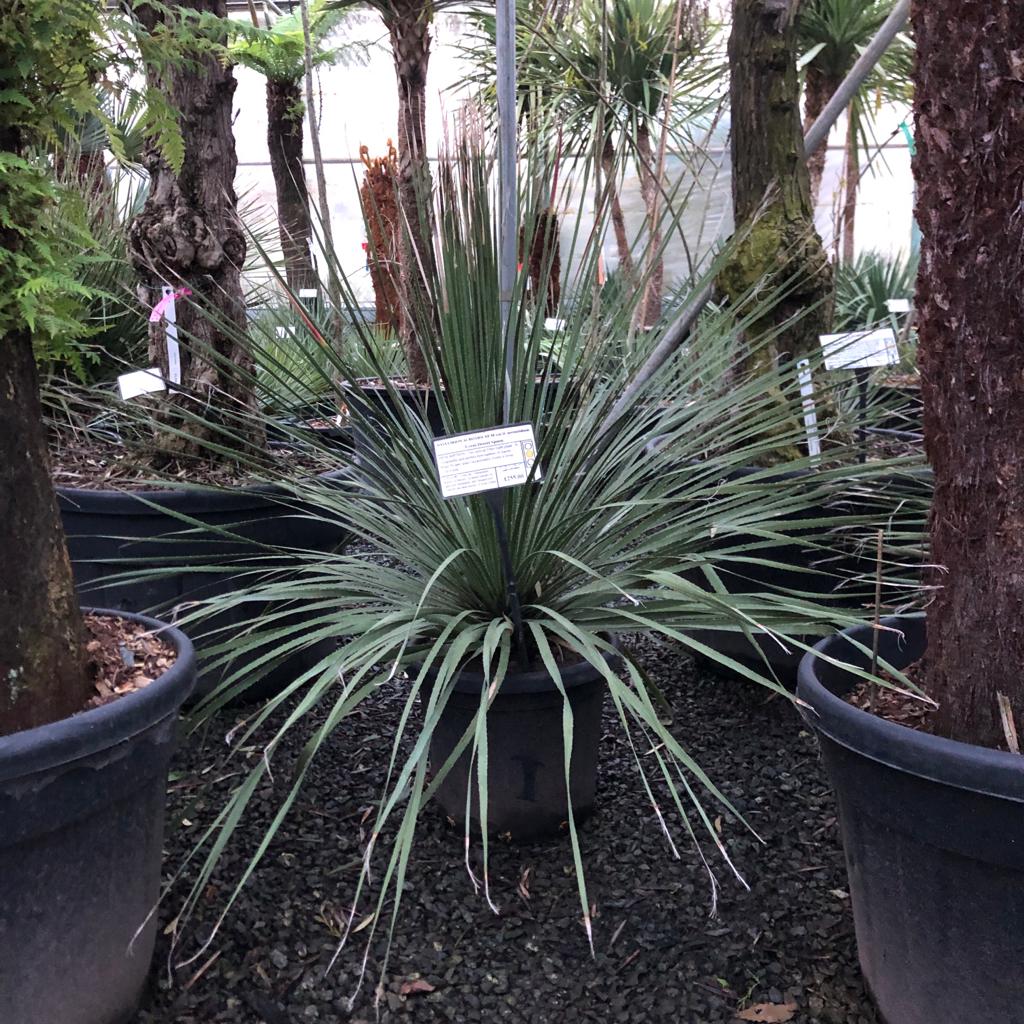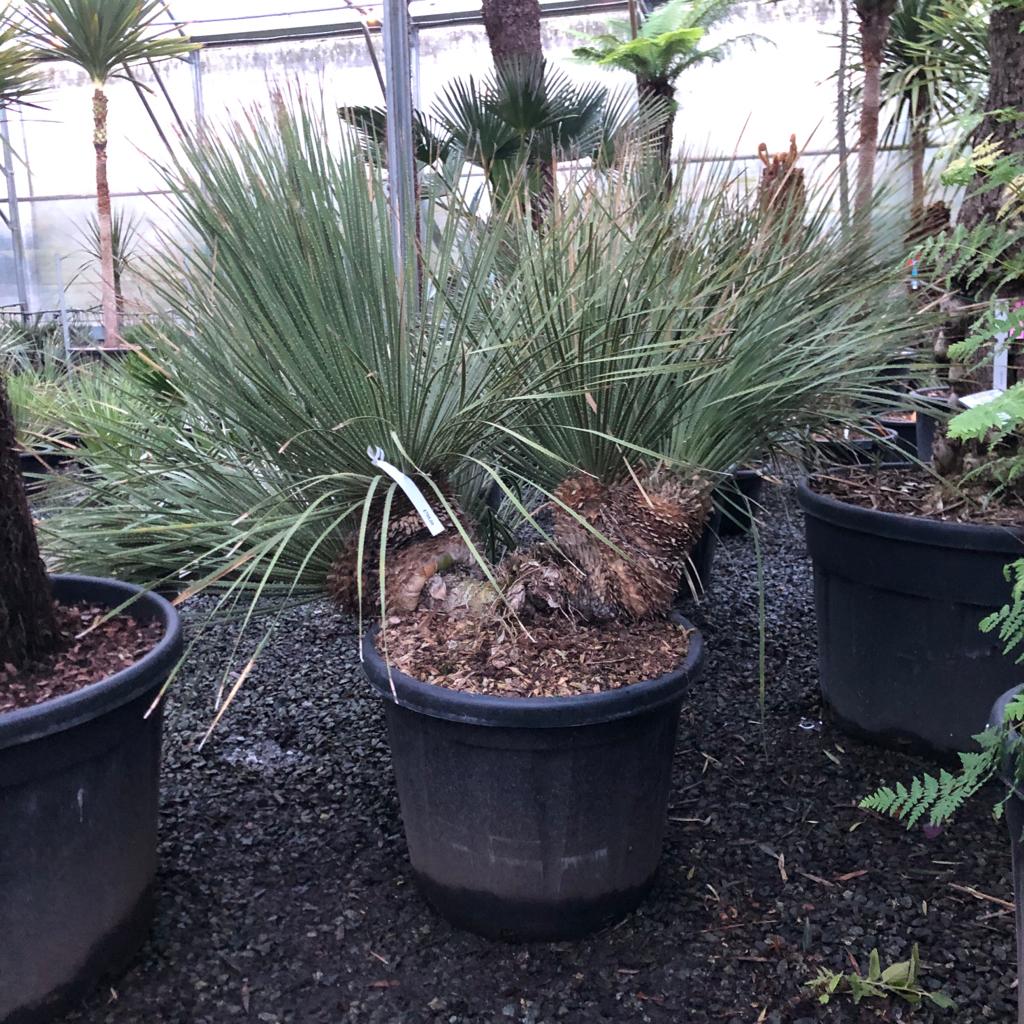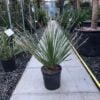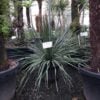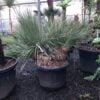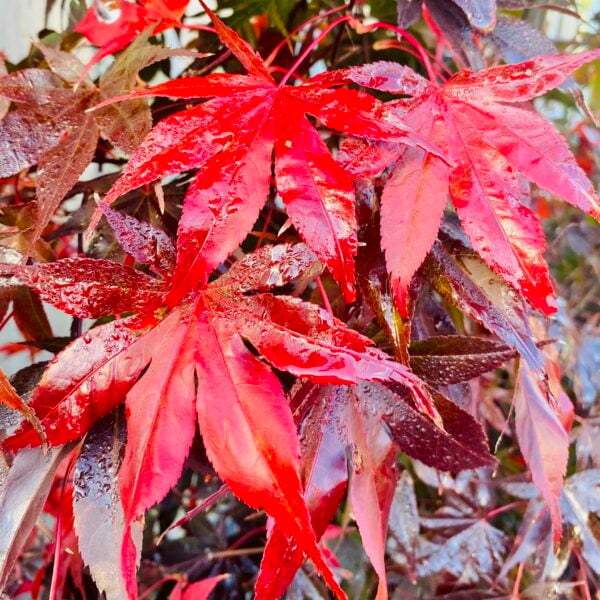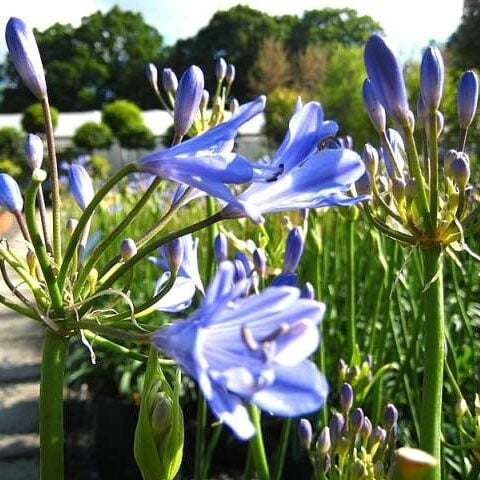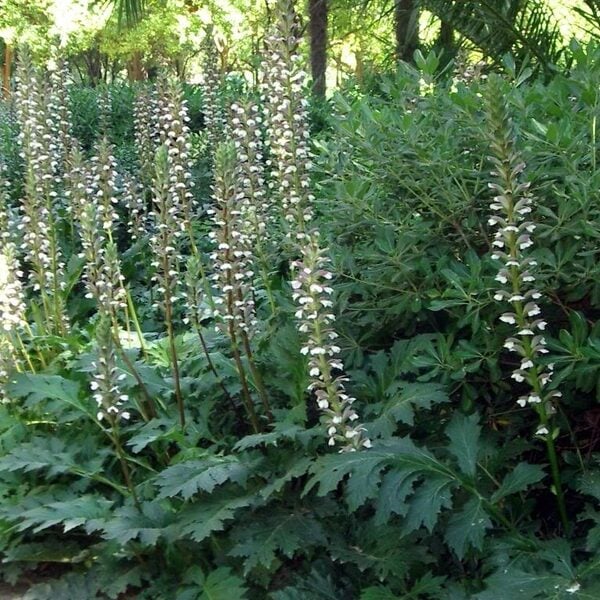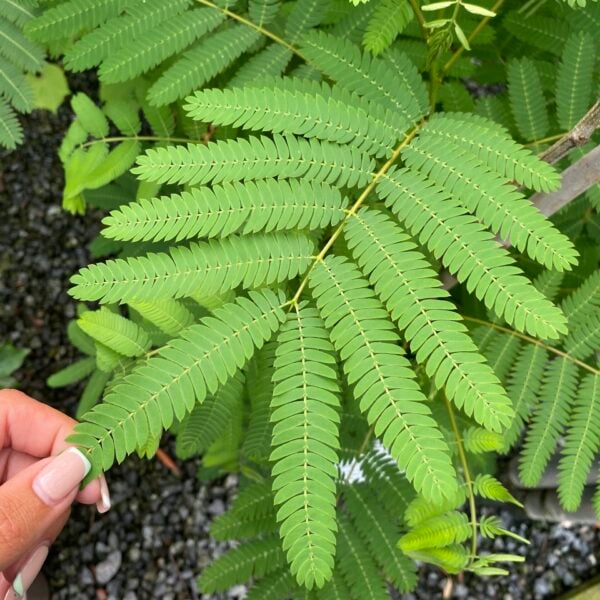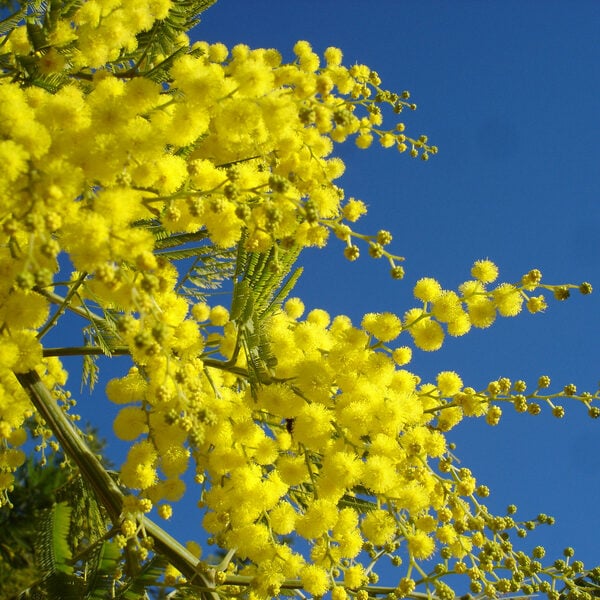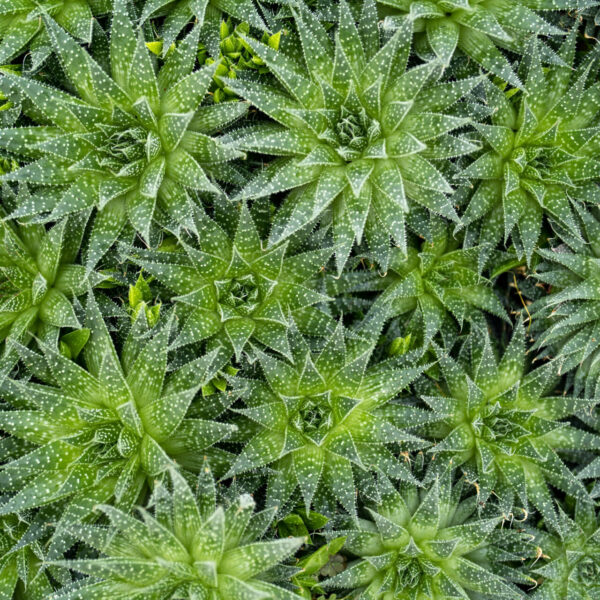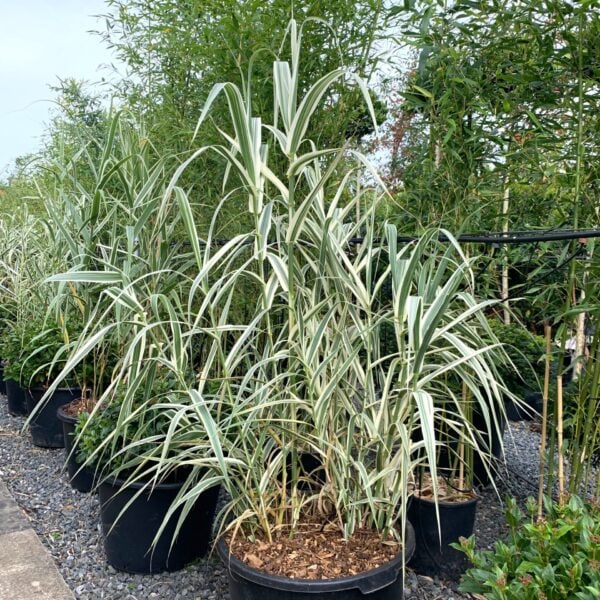Dasylirion acrotrichum (Great desert Spoon)
From 82.50 incl. VAT
A great spherical mass of thin green leaves that cleverly bridges the gap between exotica and topiary. Remarkable, easy and beautiful. 3ft by 3ft.

Hardiness level Amber
Another wonder of the world and the fact it appear to grow so well in soggy old England is a bit of a mystery. Most of its relatives tend to get fungal spots on their leaves in particularly wet and mild winters but this doesn't. Not a thing. They take a while to get their roots established and you can tell (after a year or two) when they're established. They suddenly look denser and happier and better. They need lots of light and space to do their thing : their thing is to look - from a distance - like a hemisphere. A spiky hemisphere that creates a bridge between the traditional (a box ball) and the exotic (the spikiness). The fact that this plant seems to have - deep within its DNA - an ability to cope quite happily with damp conditions, makes one wonder about its evolutionary history. Is there any fossil evidence to suggest that a part of their development was spent in wet conditions to which they adapted perfectly. None of their spiky brethren can tolerate dampness like this. I wish I knew more about his branch of plant knowledge. I first saw this plant in the Abbey Garden on Tresco (the Isles of Scilly at 50°North) which is famous for its well ventilated and virtually frost free climate. As with many of the plants in that garden I assumed it would be impossible to grow in Sussex. And then I saw a fine old specimen growing on the Exeter University campus. Much colder than Tresco but milder than Sussex. I planted some in a sunny well drained spot in my exceedingly chilly garden in Sussex around 1990. They're all still there and look marvellous. Quite a revelation. We used to grow these from seed but after 3 years they looked little better than a few blades of grass so we gave that up and now buy them from a chap in Italy who grows them in a field and containerises them. They're not cheap (they're about 20 years old) but if you want a Dasylirion in your garden, there seems little alternative.
Occasionally suffers from Sooty Mould in the centre which forms black stripes across the leaves as it grows out. Can be rubbed off but doesn't do the plant any harm. This is a bit of a mystery and only seems to happen when they're in pots on the nursery - not once they're in the ground. Cutting off the lower leaves is strongly recommended for purely cosmetic reasons and can be interesting : take a piece of string 4ft long and make a loop in one end. Pass the string round the base of the plant under all the leaves. Pass the loose end through the loop and pull tight while you raise the string up the plant. You might need to practice but once you get good at this you'll realise it's a great way of tying the leaves up out of the way and you then use your secateurs to remove all the tatty old leaves. This is intermediate level Creative Maintenance. Wear gloves and if you don't wear specs, some eye protection isn't an entirely stupid idea. Slightly soppy but still quite a good idea.
We have a number of these doing well in the new garden at the nursery at Pulborough.
PS. We call it Dasylirion (which it is) acrotichum (which it might be) because they look like the ones in Tresco and that's what they call them. Would I be prepared to give a vigorous defence of this name? No.
N.B. When clipping several plants with the same tool, have a bucket containing a 5% bleach solution and swish your blades around for 30 seconds between plants to sterilise them. This will help avoid the chance of cross contamination of disease.
As with all woody plants, plant high, exposing as much of the taper at the base of the trunk as possible. Allowing soil to accumulate round the base of a tree can be fatal. Keep very well watered when first planted.
Additional Information |
|
|---|---|
| Size | 130L (H90cm-1.1m, W1.6-1.8m) S1.1m, G17-33cm, 30L (H80cm-1m, W1.3-1.5m), 7-18L (H60-70cm, W80cm-1.2m) |
| Soil Type | |
| Light | |
| Plant Type | |
| Continent of Origin | |
| Features | |
| Situation | Coastal, Exposed (To wind and sun), Mild City Gardens, Plants for Pots, Seaside, Sheltered Garden |
| Flower Colour | |
| Hardiness | |
FAQs
How fast does Dasylirion acrotichum?
We used to grow these from seed but after 3 years they looked little better than a few blades of grass so we gave that up and now buy them from a chap in Italy who grows them in a field and containerises them. They're not cheap (they're about 20 years old) but if you want a Dasylirion in your garden, there seems little alternative.
How do you take care of Dasylirion acrotichum?
Not a thing. They take a while to get their roots established and you can tell (after a year or two) when they're established. They suddenly look denser and happier and better. They need lots of light and space to do their thing : their thing is to look - from a distance - like a hemisphere.
Occasionally suffers from Sooty Mould in the centre which forms black stripes across the leaves as it grows out. Can be rubbed off but doesn't do the plant any harm.
How tall do Dasylirion acrotichum grow?
3ft by 3ft
Do Dasylirion acrotichum prefer sun or shade?
They need lots of light and space to do their thing
Is Dasylirion acrotichum an indoor or outdoor plant?
Outdoor





